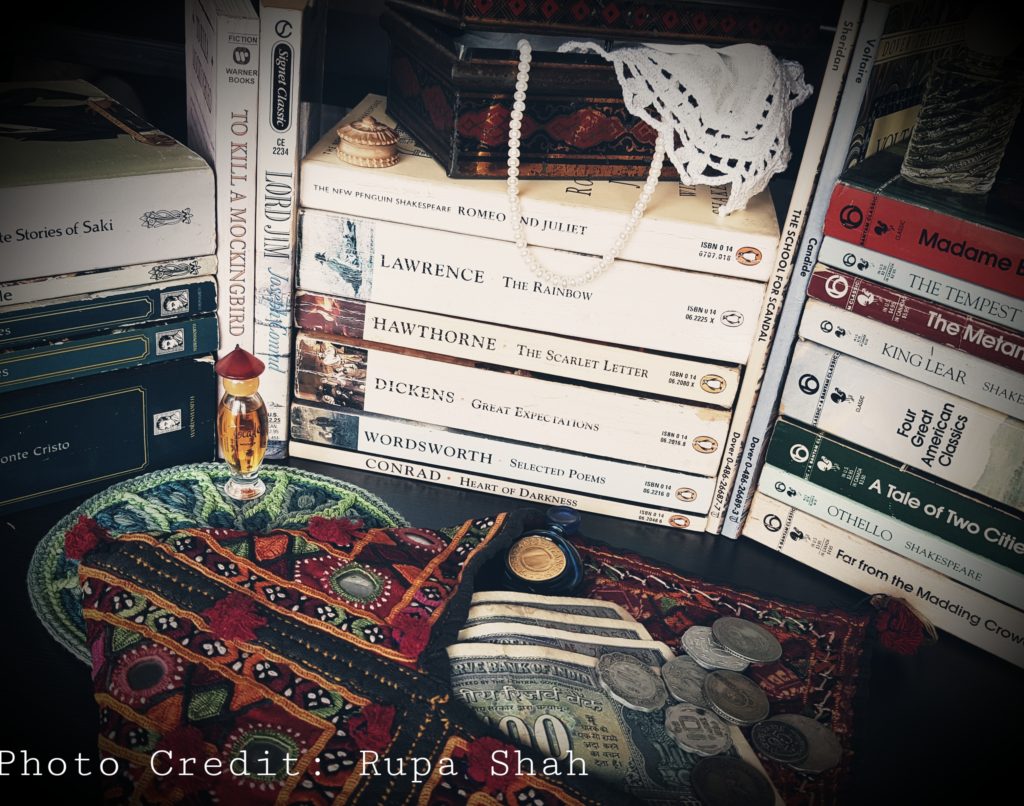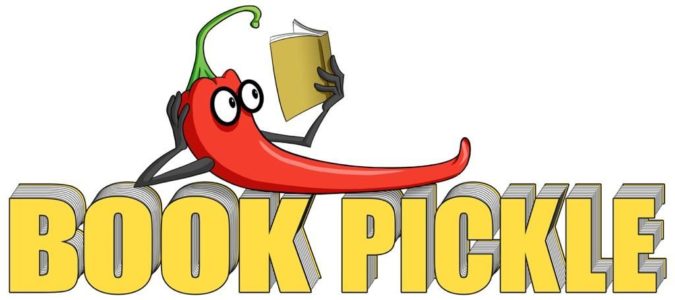I am thrifty when buying books
Yes, I am a thrifty book buyer.
And it’s taught me a lot!

Readers and book collectors are often guided by Austin Phelps’ sensible advice, ‘Wear the old coat and buy the new book.’ I am no exception. No wonder bookstores and publishers never tire of discreetly reminding the buyer of this advice through their bookmarks and other bookish merchandise.
In fact, when I first encountered this quote on a bookmark, many years ago, I wondered why I would even need a coat in the hot weather of Gujarat! So, I spent (almost) everything on books!
When you have very little to start with and when you want to spend it all on books and have lots of them, frugality and thrift set in. In my case, my whole book-buying and book-collecting philosophy changed when I watched the movie Chashme Badoor, starring Farooq Shaikh and Deepti Naval. ‘What’s the connection here?’, I hear you wonder. Well in the movie, Neha (the character played by Deepti Naval) sells washing detergent on the side to be able to pay for her music lessons, because her father believes that one should pay themselves for one’s passions and hobbies. Somehow, this dictum stuck with me! I was not content reading and buying books, I wanted to buy books with my own earnings!
So, I took up a teaching job at a local institute while pursuing my degree in Literature. The pay wasn’t great, but it allowed me to buy enough books every month. But, for a reader there is nothing like enough! And here’s where thrift and frugality came in handy! I started buying collected works and mass market paperbacks because these were cheaper than other books. You get to read all the works written by an author in one book, so what if it doesn’t have pictures, or fancy dust jackets and gilded pages! The print was really tiny, but it didn’t bother me then. The fact that I could own it all in one volume and afford it too, was too enticing to turn my back on. Wordsworth Classics with the distinctive image of Wordsworth and his daffodils on the spine and shades of blues on their covers, Bantam Classics and Penguin Classics with cover images reminiscent of renaissance paintings and Dover Thrift editions became my staples. What was there to not like about them! After all, they had ‘thrift’ written all over them!
Choosing book in those days and deciding which edition to buy was a carefully choreographed routine. It involved spending hours in bookshop aisles and on floors, comparing all the editions, down to even the number of illustrations each had, reading the prefaces, forewords, introductions, indexes, footnotes and bibliographies too, to see how helpful these could be and the value they added to the text, checking the copyright pages to find information about imprints and editions to see how popular each were, and of course, a comparative analysis of the price vis a vis these features. Little did I know then, that this obsessive desire to have the best value edition that I could afford was teaching me a lot about how books are produced, marketed, sold and consumed, lessons I value now as much as the ideas those books had to offer.
That phase has long passed now. I do like to and can afford to buy more and better printed books now. Every so often, I treat myself to well-bound and beautifully printed books for the pleasure of the experience such editions provide. The choice isn’t as simple today. We have paperback, hardback, imported editions and even digital editions of books available, all at different price points. And then bookshops, online shops and websites have many sales and membership programmes that tempt you and make it feasible for you to buy more. Enticing images, customer reviews and the chance to see inside pages and read samples of the book before you buy them, all play their part. And while the world of books and publishing industry is busy digitising itself, all those ‘thrifty’ editions on my shelves are busy crumbling, yellowing and coming apart. And that has given rise to another romancing-the-books routine. I am now buying and replacing (‘replace’ doesn’t quite mean the same in a book collector’s dictionary) many of these with beautiful hardbacks with gilded pages and the works!
When I now buy books, I do think about their shelf life, whether I would want to re-read them, how frequently will I refer to them in my profession and many other criteria before spending. There are also times, when I buy the paperback or the hardback because though the digital edition is cheaper, I would rather have the printed book. There are also new considerations that have emerged on the landscape of my book-buying psyche. Is this supporting an indie bookstore? Is it a good edition to replace one of the crumbling paperbacks on the shelves? Is it just a fancy edition or does it have the original illustrations? Is it easy on the eyes? And the realisation that in the long run, hardbacks turn out to offer better value, especially if it is a book of all times.
But the thing with thrift and frugality is that once they set in and seep into every pore of your conscious self, they don’t leave. Not that easily! Price is still more often than I would like it to be, the criterion that calls the shots, or fills the shelves, in this case.
What deciding criteria fills your book shelves?

“Hem your blessings with thankfulness so they don’t unravel.” – jokerstash